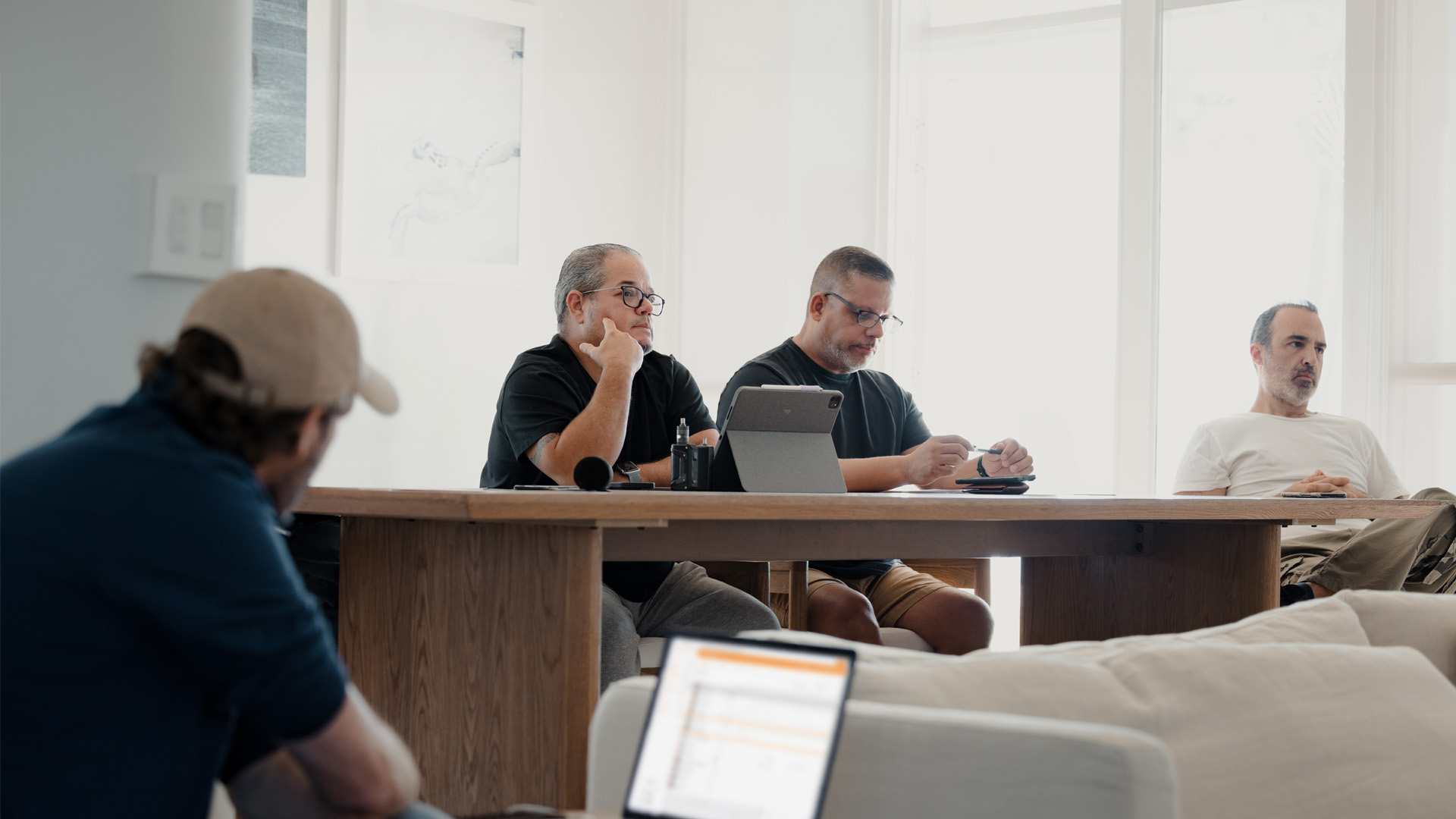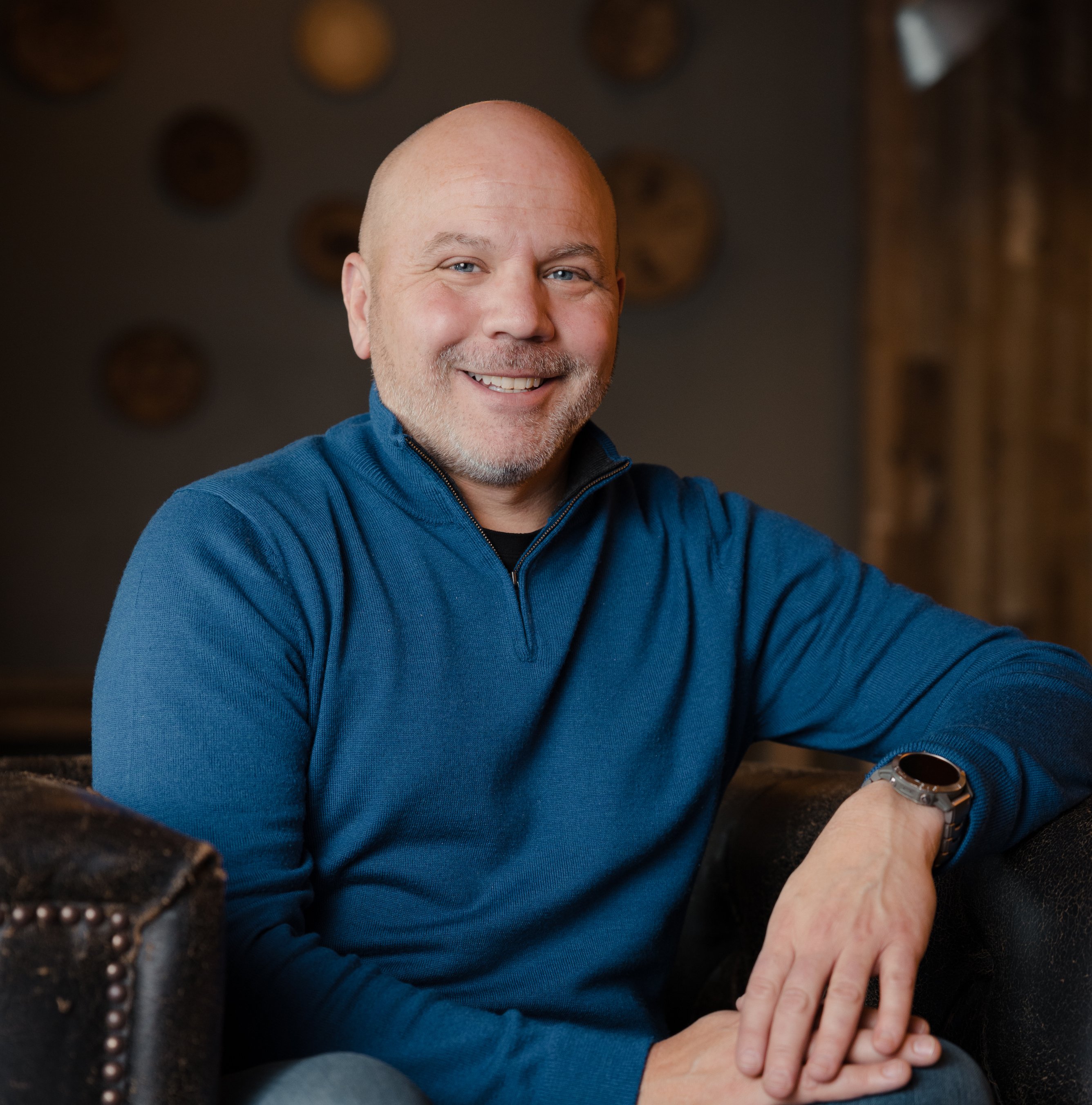The EOS Process®: From Start to Infinity
I'm a fan of Simon Sinek’s position on the “infinite game” of business. You run out of either resources or will to play the game. Implementing the EOS Process is a great way to not run out of either. It’s a Forever Work, as the framework extends beyond the implementation and initial work with an EOS Implementer®. Let’s unpack how to implement the Entrepreneurial Operating System® (EOS®) into your organization. I’ll walk you through the proven process to align your company around the Six Key Components® and how you can begin your journey with EOS.
There are two ways to implement EOS:
- Self-implementing
- Hiring an Implementer
Regardless of which way you choose to implement EOS, I believe there is one way to maximize your outcome. That is to do it Powered by Ninety. Framed in Six Key Components and 20 Tools, EOS visually comes to life on the Ninety platform such that the entire organization can become 80%+ strong.
But please learn and hear more from Visionaries and Integrators who have lived it — like Jeff Harsh, President of Concept.
“EOS Powered by Niney ended up being a really good decision…it ensured all of our team members are pulling in the same direction…probably the biggest thing that it did for us was allow us to prioritize working on the business as compared to in the business.”
— Jeff Harsh, President of Concept
Ready to learn the EOS Process? Let’s dive in and go over the roadmap for sustained business momentum.
Key Points:
- The EOS Process is a series of 6 meeting types to provide leadership teams with the concepts and tools of EOS to run their company
- After the first four meetings, the EOS Process continues through the 90-Day World®, which includes quarterly meetings and annual planning sessions
- The EOS Process helps organizations align around a vision, gain traction in their business, and create a healthy culture
EOS Process Overview
The EOS Process is a series of four meetings that an EOS Implementer, or your organization’s self-implementer, uses to transition the leadership team into using the concepts and tools of EOS to run the whole company. When adopting a Business Operating System (BOS) like EOS, it’s critical to remember that it’s an entire company operating system.

The 90-Minute Meeting
It all starts with the 90-Minute Meeting. This is when an implementer will perform a no-cost exploration so you can learn more about EOS and them, share about where your business is at and where you are trying to take it, review the Six Key Components, and, finally, walk through what an implementation would be like.
In the many 90-minute meetings that I have personally led, I’ve witnessed the great value this meeting brings to the leadership team even if they ultimately decide to self-implement. It’s not a sales pitch; it’s an educational opportunity.
Focus Day®
Next is the Focus Day. This is the first full-day meeting in the EOS Process. This meeting covers what to do when you hit the ceiling and offers tools to the leadership team to improve the foundational structure of the organization, including:
- Building your Accountability Chart
- Creating Rocks (90-day goals)
- Establishing The Meeting Pulse®
- Identifying Measurables for your Scorecard
To overcome hitting the ceiling, EOS teaches The Five Leadership Abilities™ — Simplify, Delegate, Predict, Systemize, and Structure. Every organization eventually reaches a limit to its growth based on its existing resources; practicing this EOS tool helps leaders break through these plateaus on their way to achieving their vision.
Vision Building® Day 1
After the Focus Day, the leadership team should schedule the first Vision Building Day about 30 days later. This meeting has four essential objectives:
- Continue mastery of the Focus Day tools
- Begin Core Values work
- Identify our Core Focus (Purpose, Cause, Passion + Niche)
- Determine our 10-Year Target™
During Focus Day, we launch foundational tools that help the organization gain some traction even in the first 30 days. There will be struggle, and it will feel wonky at first, but that is why implementation takes 60 days.
EOS helps leadership teams identify and document their vision by answering at least the top five of the eight questions in the Vision/Traction Organizer® (V/TO®). You can document and share your V/TO easily through Ninety’s Vision tool.
EOS designed the following eight questions to bring agreement and clarity to the organization.
- Core Values — What essential characteristics define your organization’s culture?
- Core Focus — What is your organization’s purpose and passion, and how can you use them as filters for decision-making?
- 10-Year Target — What audacious long-term goal will sustainably energize your organization?
- Marketing Strategy — What is your target market? Who are your ideal customers? What are your Three Uniques?
- 3-Year Picture™ — Where do you intend to be in three years?
- 1-Year Plan — What are the financial predictions and goals you want to accomplish this year?
- Quarterly Rocks — What are the priorities for the next 90 days for the organization and each department, team, and individual?
- Long-Term Issues List — What are the long-term obstacles and opportunities to discuss and solve at your next quarterly meeting?
Throughout Vision Building Day 1, the leadership team will identify, discuss, and document the answers to the first 5 questions in their V/TO. Before concluding, the team should schedule their next Vision Building Day about 30 days in the future.
Vision Building Day 2
Making it to Vision Building Day 2 is exciting, as this is the day that it all starts to come together. This full-day meeting covers the 7 agenda items below, including reviewing and advancing the work from the first two implementation days. The leadership team should have ample evidence supporting the use of EOS for the organization.
At the end of this meeting, the team will decide when they are ready to roll out EOS to the rest of the organization. It’s a critical next step that can be further supported by assets like the What the Heck is EOS? book.
- Review mastery of the Focus Day tools
- Review Core Values, Core Focus, and 10-Year Target
- Develop the Marketing Strategy
- Build the 3-Year Picture
- Align on 1-Year Plan
- Set Quarterly Rocks
- Identify Long-Term Issues
As the final step in the EOS Process before the repeated cycle of the 90-Day World, the leadership team must master EOS’s foundational tools: the V/TO, Accountability Chart, Meeting Pulse, Rocks, and Scorecard. These are the tools the team should begin rolling out to other departments as soon as possible.
When the whole organization operates on the same system, you’ll see new levels of alignment, clarity, and drive.
Finalizing each of the eight vision questions is essential work for this process. Take each question one at a time and ensure everyone on the leadership team agrees and can commit to the answer. The team’s responses define who the organization is (Core Values), what it is (Core Focus), where it’s going (10-Year Target), and how it will get there (Marketing Strategy).
With the high-level answers finalized, the team can focus on the immediate future by solidifying their 3-Year Picture, 1-Year Plan, and Rocks. These incremental targets serve as mile markers on the way to the 10-Year Target. With that in mind, it’s key to ask, “What do we need to have accomplished in three years, one year, or 90 days to be on track with our vision?”
Before concluding, the team should move any Issues to one of two lists — Short Term or Long Term. Short-Term Issues belong on their leadership team’s Level 10 Meeting™ list. Long-Term Issues contain obstacles and opportunities that can wait for discussion until the next quarterly meeting.
The 90-Day World
The end of the EOS Process is a constantly renewing cycle of three quarterly meetings a year and one annual meeting held over two days for the leadership team.
Each quarterly meeting provides an opportunity for the team to reset, review, and realign for the next quarter ahead. By now, the EOS Process has proven the benefits of stepping back from daily tasks to complete strategic planning and improve team health. As you continue with EOS, you’ll work on mastering additional concepts and tools from your Implementer or your internal champion.
The two-day annual planning session is a great time to come together to review the previous year, work on team health, update the organization’s vision, review and reset the 3-Year Picture, calibrate a new 1-Year Plan, and set new Rocks for the coming quarter. I also always encourage the team to have fun together. Session days can be emotionally draining but exceptionally rewarding.
To play an infinite game, it’s much easier to separate the years to come into manageable 90-day pieces. The 90-Day World will keep you agile and ready for what’s next.

The EOS Journey: Step-by-Step with Ninety
EOS has been professionally implemented in more than 25,000 companies. 10,000 companies are running EOS powered by Ninety’s software. I have personally implemented with and without the software. For me the difference isn’t just in the three implementation session days; it’s everything that happens after, when the team and eventually the entire company are going to be running on EOS.
We often say that a chain is only as strong as its weakest link. With an operating system, the truth holds for the departments to the individuals. Our goal is to get everyone working as one, and Ninety’s software allows EOS to scale with velocity across the entire organization.
It has built-in agendas for each EOS meeting, including:
- Level 10 Weekly Meetings
- Focus Day
- Vision Building Days 1 and 2
- Quarterly Meetings
- Annual Planning Sessions
We want to help simplify the hard work of building great organizations. Providing a cloud-based platform to synchronize your EOS journey with intuitive software tools is the best way to align any organization around its Vision.
The Importance of Having an EOS Implementer
Most of us have had a coach at some point in our lives. With more certainty, I would say we have had teachers and, specifically, we have witnessed great facilitators of meetings.
Professional EOS Implementers are coaches, teachers, and facilitators.
They act as coaches to help leaders get what they want from their businesses. They teach the concepts, tools, and disciplines required to be 80%+ strong, and they facilitate the sessions to be both productive and healthy.
While your organization might not be in a place today to work with an EOS Implementer, I highly encourage you to talk to other business leaders and hear what they have to say about the right time to work with a coach.
There are nearly 800 EOS Implementers, and I believe there is a great fit waiting for your organization. What’s more, 80% of EOS Implementers are in the Ninety partner program, and we’re always here to help you find what you’re looking for.
Amplify Your EOS Process with Ninety
The EOS Process is your roadmap to business success. Power your EOS journey with Ninety to bring your vision to reality. The EOS Toolbox™ holds 20 time-tested tools to harness as needed when obstacles arise. We’ve digitized these tools in Ninety to give organizations the power to achieve their goals.
With tools and features designed to complement EOS, Ninety ensures you’ll get the most out of every step.
Frequently Asked Questions
1. What is the EOS Process?
The EOS Process is a proven path to success for small and midsize businesses. Beginning with the 90-Minute Meeting, implementers show leadership teams how to adjust their operational strategies to gain traction and improve. Then, the implementer or internal champion facilitates three foundational meetings over the course of 60 days to provide essential tools and concepts to get the whole leadership team operating on EOS.
These meetings are the Focus Day, Vision Building Day 1, and Vision Building Day 2. After these key sessions, the leadership team may begin rolling out EOS to additional teams as they embark on an infinite cycle called the 90-Day World, which divides the year into four quarters. A quarterly meeting or the two-day annual session caps off each quarter.
2. What are the Six Key Components of any business in the EOS Model?
The EOS Model proposes Six Key Components that every business needs to master: People, Vision, Data, Issues, Process, and Traction®.
3. How do you start with the EOS Process?
To begin the EOS Process, have a professional EOS Implementer meet with your leadership team for 90 minutes. They’ll walk you through the scope of the process and provide an overview of the concepts and tools EOS uses to align teams and give organizations the traction they need to thrive.
4. What is the significance of the 90-Day World in achieving Traction?
The 90-Day World keeps teams and organizations focused on the priorities that will guide them to their vision.
5. How does the EOS Process help in establishing the right business practices?
The EOS Process puts critical tools into the hands of the leadership team early on. EOS will teach you how to keep striving forward after hitting the ceiling, how to structure your people in an Accountability Chart, how Rocks keep everyone focused on building toward long-term goals, how to have efficient and effective meetings, and how to benefit from data using Scorecards.






